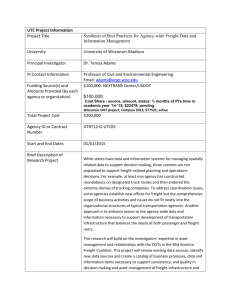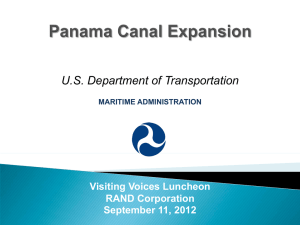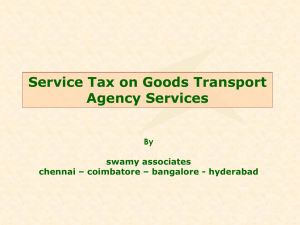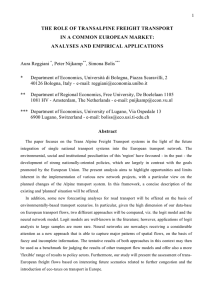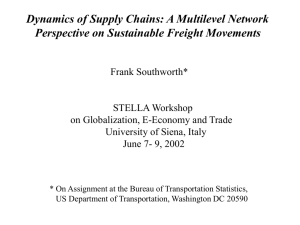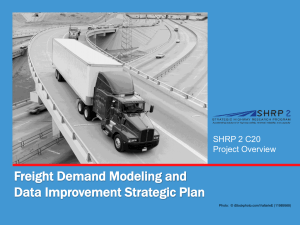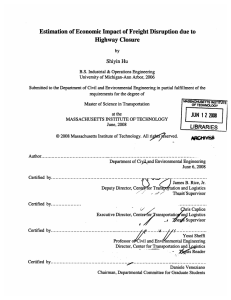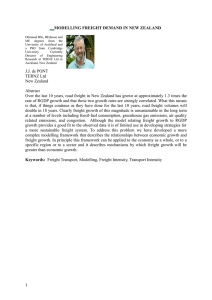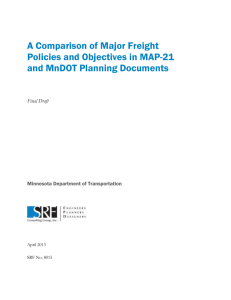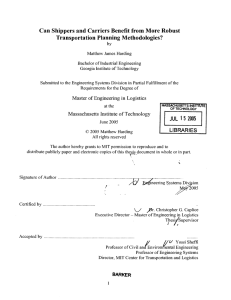Comments on “Estimation on Stated
advertisement
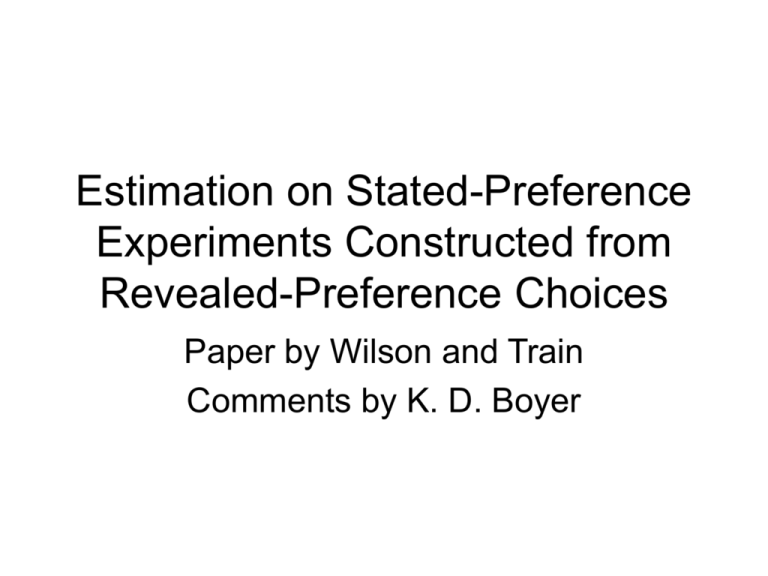
Estimation on Stated-Preference Experiments Constructed from Revealed-Preference Choices Paper by Wilson and Train Comments by K. D. Boyer The purpose of freight demand estimation • Holding the price of all other alternatives constant, what percent of traffic would disappear if the price of that alternative were raised by 1%? • Similarly, what about other movement characteristics? Data • Have half the universe of shippers in sample. • Asked them about rates, transit times, reliability of each of 6 alternatives and what choice was made. • Then ask what they would have done had rates on chosen alternative been 10% higher, 20% higher, etc. • Similarly for other characteristics Are ANY econometrics necessary? • Why not calculate the elasticity directly? – For each chosen alternative, we know how what percentage of shippers will switch. • What more do we want to know? • We can directly construct relative importance of price, speed, and reliability for each alternative. • What is the reason for doing a Logit analysis on the data? – A suspicion that there is something fundamentally similar about freight choice decisions between settings. • So we are trying to find universal truths about freight choice. What is the regularity we are looking for? • In standard logits, each alternative has a utility that is only partly determined by observables. • The advance of this paper is to econometrically account for the fact that when you pivot off the chosen alternative you are carrying along the unobserved characteristics of the alternative. This is obviously sensible • If you are located near Pasco, you will have a preference for using the port of Pasco. Location is an unobservable in the data. You do want to assume that a shipper’s location is maintained when you raise rates by 10%. The preference for Pasco will be correlated with the rates charged through Pasco. But still … • I have never been convinced that shipper’s choices are usefully modeled through the utility function of the shipping agent. (Or at least, not since deregulation.) • Shippers are more rational than that. • What appears to be choices made by a draw from a random number generator will turn out to be the result of locationidiosyncratic characteristics. The data are perfect … • for calculating the spatial equilibrium and the perturbation of that equilibrium. • We can learn a great deal about the usefulness of logit methods in freight demand by comparing predicted choices with those constructed directly • We can directly calculate demand elasticities. • How close do logit methods come? Freight demand regularities? • According to Oum, Waters, and Yong, freight demand studies have problems of: – Data availability – Non-random price setting – Complexity – Transferability • If logits correctly mirror true demand, perhaps there is more hope than skeptics thought. Don’t stop at significance • Look at more than sign and significance. • Use the framework to predict each elasticity for each alternative. • How close does the logit formulation come to the truth implied by the data?



